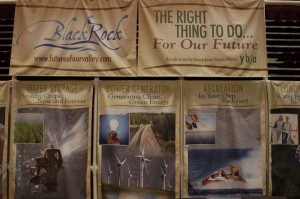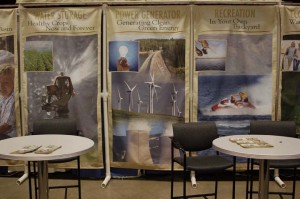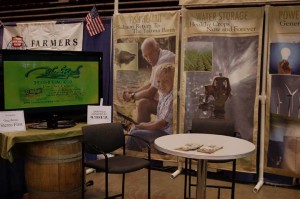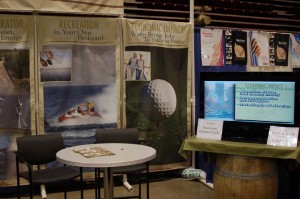YBSA Monthly Report September, 2008
YBSA Monthly Report
September, 2008
Marketing Campaign: Yakima Basin Storage Alliance has contracted with Enigma marketing to design a brochure and program explaining the real values of Black Rock for our future and for design of a booth for the Central Washington State Fair. The five key elements presented in the brochure are fish health, water storage, power generation, recreation and economic impact. See www.futureofourvalley.com.
Dr. Stanford Presentation: Dr. Jack Stanford, an exert on river ecology and restoration, presented his thoughts on how to restore 1 million salmon and steelhead in the Yakima River Basin. Dr. Stanford believes there is no better place in the lower 48 states to accomplish this goal.
Dr. Stanford Discussion with Basin Biologists: Dr. Stanford stated that the Kol River in Russia is similar in flows and floodplain area to the Yakima and produces 5-7 million salmonids/year with 30% harvest rates. The Yakima has all the elements needed to restore salmon; it just needs the water to reconnect. This project hasn’t been done: “Grand River Restoration:, the question is: how to get it completed. They have remote sensed 1200 rivers around the North Pacific rim: the Yakima River Basin comes out very high in intrinsic value and floodplain habitat. The Yakima is still #1 in the lower 48. The Yakima has been the most productive node in the Columbia Basin historically and still can be.
A representative from the Yakama Nation stated that Jack needs to see the Yakama Nation comments and that “The Yakima Nation still supports storage if all tools in the toolbox are used, and that passage at the upper reservoirs has to be foremost in any solution.” Dr. Stanford asked, “Are you keeping the lower river in view.”
Dr. Stanford said the model flipped in 1978 and just flipped again this year, which is good for the Pacific Northwest as currents & their nutrients will be more favorable. Don’t forget that climate change is logarithmic, minimum temps in winter are climbing, so restoration must keep climate change in mind. The salmon are fighting for survival against cultured fish escapees from Japan and Russia mostly pink and red.
Dr. Stanford’s comments in the afternoon public session were:
Real salmon recovery has to start at the mouth of the Yakima River and continue to its headwaters.
The Yakima River has the most potential for restoration but has water problems.
Need Columbia River water to make the restoration of salmon runs in the Yakima River happen.
One million fish can come back to the Yakima with the addition of more water and habitat and giving the fish the chance to come back (aka not harvesting them).
The Yakima can be one of the major fish producers in the Northwest.
Just trade water from the Columbia River for water in the Yakima for irrigation purposes.
The 3 main items that need to be done for fish are:
o Model the Yakima River on what can de done with more water for habitat.
o Diversify the stock, bring all the species back.
o Correct the method of catching salmon. It is impossible to select for specific stocks with gill nets, whereas other methods would allow you to release unwanted fish unharmed.
Let the fish find their own way into spawning channels.
You can restore Yakima fisheries without taking out mainstem dams, but it’s more difficult on the Snake River because the dams further upstream pose a problem to fish passage.
More natural flow in the Yakima is much more favorable for native fish than hatchery fish.
Non-native fish have proliferated under the regulated flows of the rivers.
Restoring habitat with augmentation of water makes the million fish possible (along with the full gamut of restoration activities).
Continuing with the status quo of salmon recovery sucks!
DVD copies of the presentation are available from Y-Pac at (509) 575-6092 for $20.00 each.
Kim McCartney, Yakima River Basin Storage Study Manager, Reported: The final EIS report will be completed by late December. The seepage report will be completed by the end of September and will include some mitigation procedures. The seepage report will be added to the final EIS. There will be a 45 day comment period after the final EIS is completed and then the Study will be presented to the Office of Management and Budget. After the review the BOR Regional Director (Boise) in conjunction with the Department of the Interior will make the final recommendations to Congress. A water report of when water is available from the Columbia River will be included.
See www.ybsa.org for more information.



